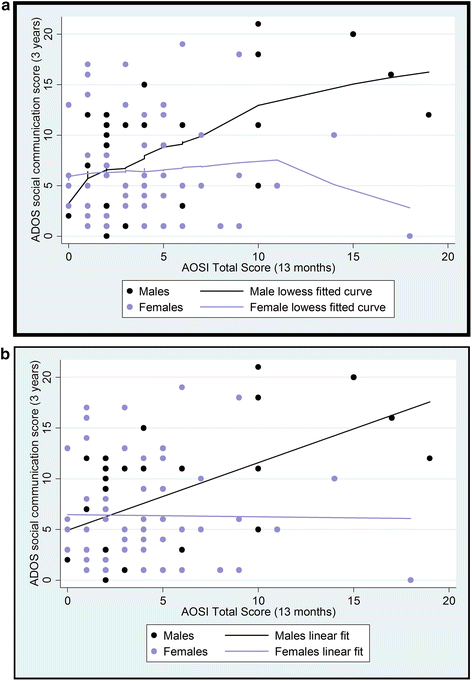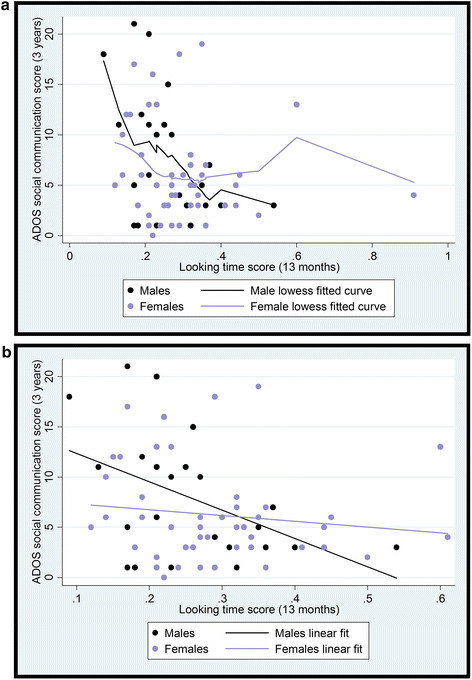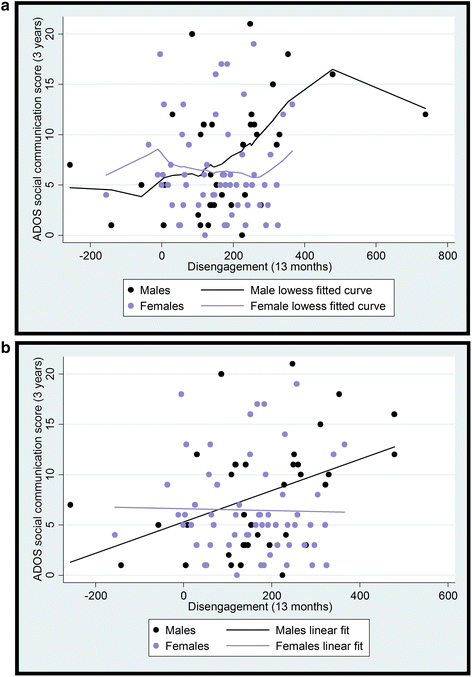Sex differences in the association between infant markers and later autistic traits
- PMID: 27034768
- PMCID: PMC4815081
- DOI: 10.1186/s13229-016-0081-0
Sex differences in the association between infant markers and later autistic traits
Erratum in
-
Erratum to: Sex differences in the association between infant markers and later autistic traits.Mol Autism. 2016 Jun 30;7:33. doi: 10.1186/s13229-016-0094-8. eCollection 2016. Mol Autism. 2016. PMID: 27375846 Free PMC article. No abstract available.
Abstract
Background: Although it is well established that the prevalence of autism spectrum disorder (ASD) is higher in males than females, there is relatively little understanding of the underlying mechanisms and their developmental time course. Sex-specific protective or risk factors have often been invoked to explain these differences, but such factors are yet to be identified.
Methods: We take a developmental approach, using a prospective sample of 104 infants at high and low familial risk for ASD, to characterise sex differences in infant markers known to predict emerging autism symptoms. We examine three markers previously shown to be associated with later autistic social-communication symptoms: the Autism Observation Scale for Infants (AOSI) total score, attention disengagement speed and gaze following behaviour. Our aim was to test whether sex differences were already present in these markers at 1 year of age, which would suggest sex-specific mechanisms of risk or protection.
Results: While no sex differences were found in any of the three markers investigated, we found sex differences in their relationship to 3-year autism traits; all three markers significantly predicted later autism traits only in the boys.
Conclusions: Previously identified 'early autism markers' were associated with later autism symptoms only in boys. This suggests that there may be additional moderating risk or protective factors which remain to be identified. Our findings have important implications for prospective studies in terms of directly testing for the moderating effect of sex on emerging autistic traits.
Keywords: Autism; Differential liability; High risk; Infants; Sex difference.
Figures




References
-
- Home CDC. Prevalence of autism spectrum disorder among children aged 8 years—Autism and Developmental Disabilities Monitoring Network, 11 sites, United States, 2010. 2014. - PubMed
Publication types
MeSH terms
Grants and funding
LinkOut - more resources
Full Text Sources
Other Literature Sources
Medical

